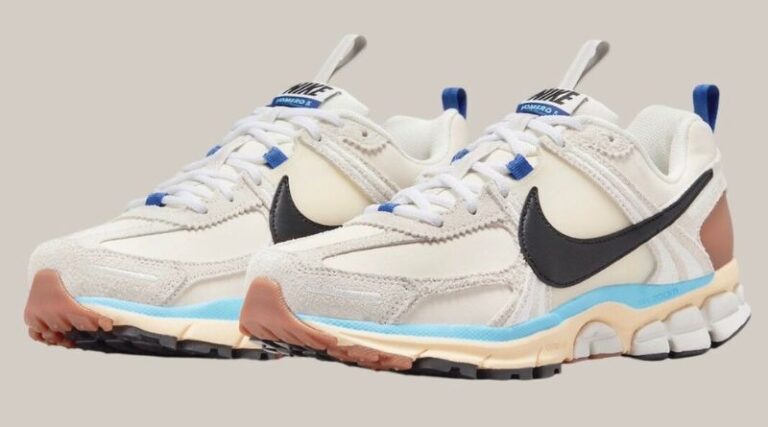
In recent years, graphic design has evolved in exciting ways, with new styles emerging to reflect changing tastes, technologies, and environmental awareness. One of the most notable design trends to gain popularity is design trends botanica graphic design, which incorporates nature-inspired elements into various design projects. This trend draws inspiration from the natural world, emphasizing floral, plant, and organic motifs in a fresh, contemporary way. Whether in branding, packaging, websites, or digital art, botanica design creates a visually rich and calming atmosphere that resonates with audiences.
Table of Contents
In this article, we will explore the design trends botanica graphic design, its influence on the creative industry, and how designers can incorporate nature-based elements into their work. We’ll also dive into the significance of botanical designs in the current design landscape and provide practical advice for using botanica elements effectively.
What is Design Trends Botanica Graphic Design?
At its core, design trends botanica graphic design is a style that uses plant-based and floral elements as a major visual influence. This trend draws on the beauty of nature, celebrating organic shapes, textures, and colors. It goes beyond simply using flowers and leaves, often incorporating a broader range of natural textures like wood, water, rocks, and even abstract representations of growth and movement.
Botanica design is characterized by a lush, vibrant aesthetic that blends the natural world with modern design sensibilities. It’s not just about showcasing nature in its literal form, but about infusing designs with a sense of life, energy, and organic harmony. From minimalist plant illustrations to intricate, detailed botanical patterns, the trend offers something for a wide variety of design projects.
Why is Botanica Graphic Design Trending?
The rise of design trends botanica graphic design is a reflection of broader cultural and societal shifts. Many designers are turning to nature for inspiration as a response to the increasing digitalization of our world. In a time when technology is often seen as cold and impersonal, botanical designs offer a more human, organic touch. There’s also a growing desire for sustainability and eco-consciousness, which is reflected in the use of natural imagery.
Additionally, the pandemic has created a renewed interest in the natural world, as people have spent more time indoors and started to appreciate nature’s calming and restorative effects. Botanica designs evoke a sense of peace and tranquility, making them perfect for projects that aim to create soothing environments, such as wellness brands, organic products, and nature-focused content.
Elements of Botanica Graphic Design
Design trends botanica graphic design can be broken down into several key elements that help define the aesthetic. These elements range from illustrative styles to the color palettes used. Here are the most important components:
1. Floral and Leaf Motifs
Floral and leaf designs are some of the most iconic elements of botanica graphic design. These motifs can range from soft, delicate sketches to bold, vibrant illustrations. Designers often use florals and leaves in various arrangements, from minimalist to intricate, depending on the project’s aesthetic.
2. Natural Color Palettes
The color schemes used in botanica designs typically draw from the natural world. Earthy tones like deep greens, browns, and warm neutrals are common, as are pops of vibrant colors that mimic the hues found in flowers, fruits, and plants. This organic color palette helps to create a harmonious, grounded visual experience.
3. Hand-Drawn Illustrations
Hand-drawn elements are a hallmark of botanica design. Illustrations of plants, flowers, and natural landscapes add a personal, artisanal touch to graphic design work. These sketches are often used to evoke a sense of authenticity and craftsmanship.
4. Geometric and Organic Shapes
Botanica design embraces both geometric shapes and organic forms. Geometric elements like circles and triangles are often used in conjunction with more fluid, irregular natural shapes to create balance. The juxtaposition of these forms adds interest and visual appeal to the design.
5. Textures and Patterns
Incorporating textures such as leaves, bark, or stone can bring depth and richness to the design. These textures can be subtle background elements or more pronounced focal points, depending on the intended mood of the project. Botanical patterns are often used to create visual rhythm and structure.
6. Botanical Typography
Typography in design trends botanica graphic design is also influenced by nature. Many designers choose elegant, flowing fonts that evoke the softness of plant life. Some designs integrate plant-based motifs directly into the typography itself, such as incorporating vines, flowers, or leaves within or around the text.
Applications of Design Trends Botanica Graphic Design
The influence of botanica graphic design is seen across a range of industries and creative disciplines. Here are a few key areas where the trend is making a significant impact:
1. Branding and Logo Design
Botanica-inspired branding is gaining traction in industries such as wellness, eco-friendly products, and organic food. Logos often feature stylized plants or flowers, creating a sense of freshness, purity, and sustainability. Brands that focus on environmental consciousness and mindfulness are particularly drawn to botanica design because it aligns with their values.
2. Packaging Design
Product packaging is another area where botanica graphic design shines. Many organic and natural brands use botanica elements to communicate their commitment to sustainability and their connection to nature. Intricate floral patterns or simple, elegant plant illustrations can be found on everything from skincare products to beverages, attracting eco-conscious consumers.
3. Web Design and Social Media
Websites and social media platforms are increasingly incorporating botanica elements. From background patterns to bold hero images of plants, these designs create a calm, serene atmosphere online. They’re especially popular in the wellness, health, and lifestyle industries, where brands want to create a connection between their products and the natural world.
4. Editorial Design
Magazines, books, and other print publications are adopting botanica design trends to create visually engaging layouts. Floral illustrations or botanical patterns are often used to frame text or as decorative borders, enhancing the overall design and making the content feel more inviting and accessible.
5. Event and Wedding Invitations
Botanical elements are also popular in event design, especially for weddings, parties, and corporate events. Invitations and event collateral with botanical motifs exude elegance and charm. These designs are often used to convey a sense of sophistication and nature’s beauty, making them ideal for occasions centered around nature and celebration.
How to Incorporate Botanica Design into Your Work
If you’re looking to incorporate design trends botanica graphic design into your own projects, here are some tips to get started:
- Research Nature’s Elements: Spend time studying plants, flowers, and trees in your environment. Take note of shapes, colors, and textures that appeal to you. You can incorporate these elements into your designs to create a more organic, authentic look.
- Use Custom Illustrations: If you’re skilled in illustration, consider creating your own plant and floral motifs. Hand-drawn elements add personality and individuality to your design, making it stand out.
- Play with Color: While greens and browns dominate botanica designs, don’t be afraid to explore different shades inspired by nature, like blues, purples, and warm, earthy tones. Creating a harmonious color palette can help set the tone for your design.
- Experiment with Digital Tools: If you’re using digital design software, take advantage of textures and brushes that emulate natural materials. Many programs offer tools that can replicate the look of watercolor, pencil sketches, or hand-drawn designs.
- Balance Simplicity and Complexity: While botanical designs are often intricate, it’s essential to balance complexity with simplicity. A cluttered design can overwhelm the viewer, so use botanical elements sparingly and strategically.
FAQs
1. What is botanica graphic design?
Botanica graphic design refers to the use of nature-inspired elements like plants, flowers, and organic textures in design projects. This trend emphasizes the beauty of the natural world and incorporates it into modern and minimalist designs.
2. What industries use botanica design trends?
Industries such as wellness, food, skincare, eco-friendly products, fashion, and lifestyle often incorporate botanica design trends into their branding, packaging, and marketing materials. The trend is especially popular among companies focused on sustainability and environmental consciousness.
3. How do I create botanical illustrations for my designs?
You can create botanical illustrations by hand or using digital tools. Start by observing real plants or flowers, sketching their forms, and experimenting with different styles. Digital tools like Adobe Illustrator or Procreate allow you to refine and enhance your sketches, offering more precision and customization.
4. Can botanica graphic design work for all types of brands?
While botanica design trends work best for brands related to wellness, nature, and sustainability, they can also be adapted for a variety of industries. The key is to balance the design elements with the brand’s tone and message.
5. What are some color palettes used in botanica graphic design?
Botanica design typically uses earthy, natural colors such as greens, browns, and neutrals, as well as vibrant floral tones like purples, reds, and yellows. Experimenting with these palettes can help you create a calming, organic atmosphere for your designs.
Conclusion
Design trends botanica graphic design is a visually captivating and meaningful style that brings nature’s beauty into modern design. Whether you’re working on branding, packaging, web design, or other creative projects, incorporating botanical elements can evoke a sense of freshness, sustainability, and elegance. By understanding the key components of botanica design and experimenting with color, texture, and illustration techniques, you can create stunning designs that resonate with today’s environmentally conscious and nature-loving audience.






